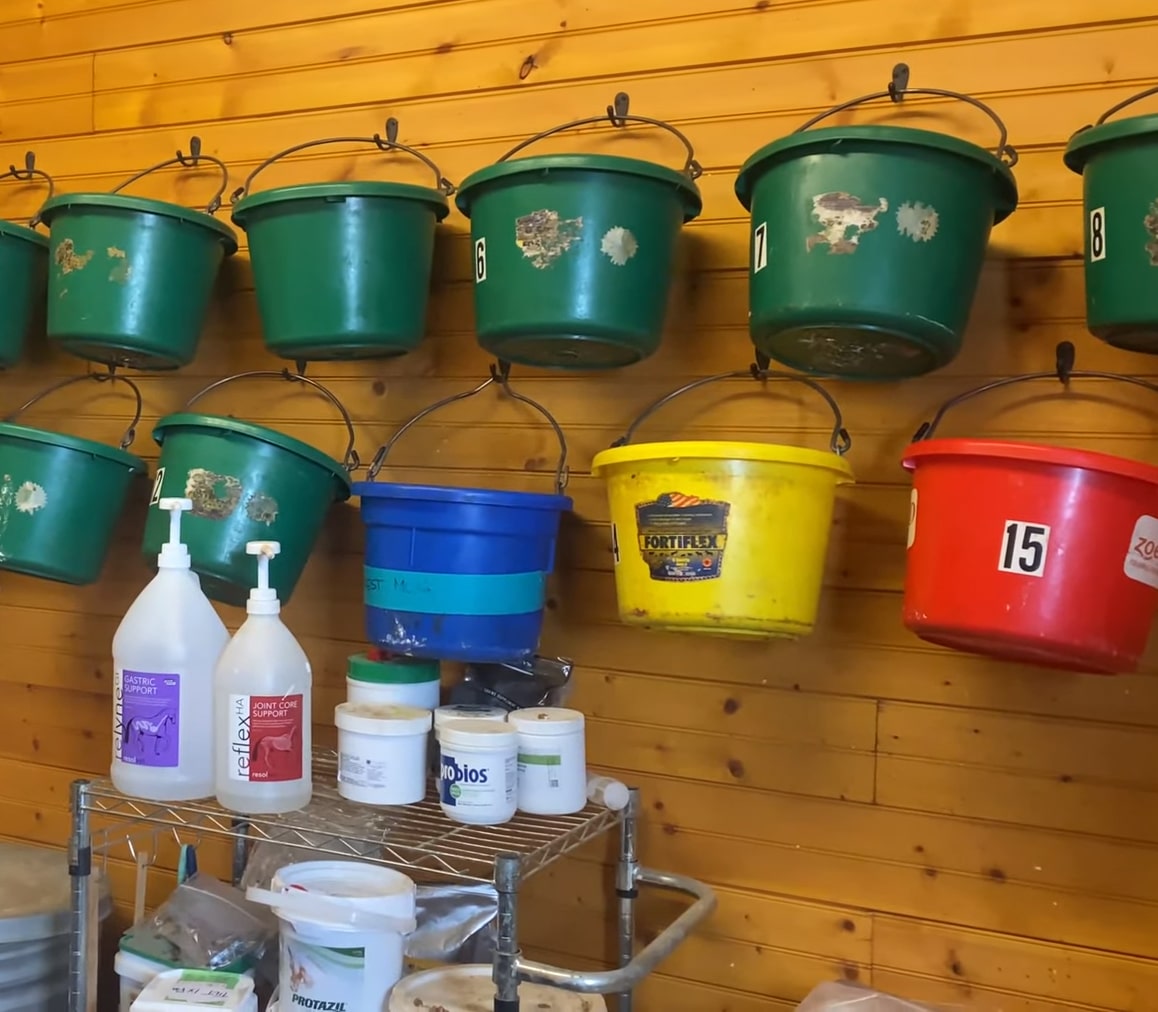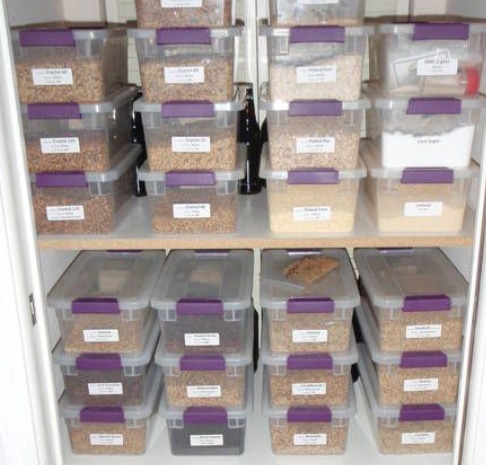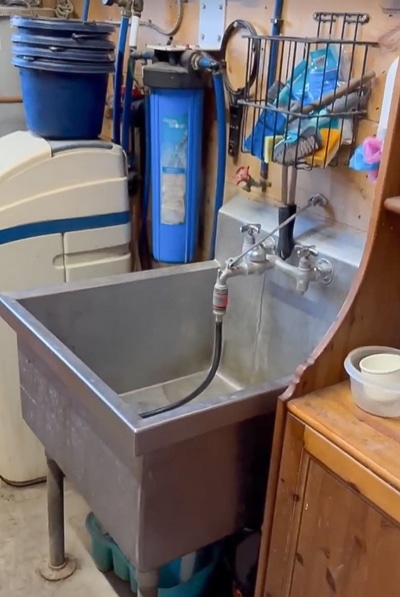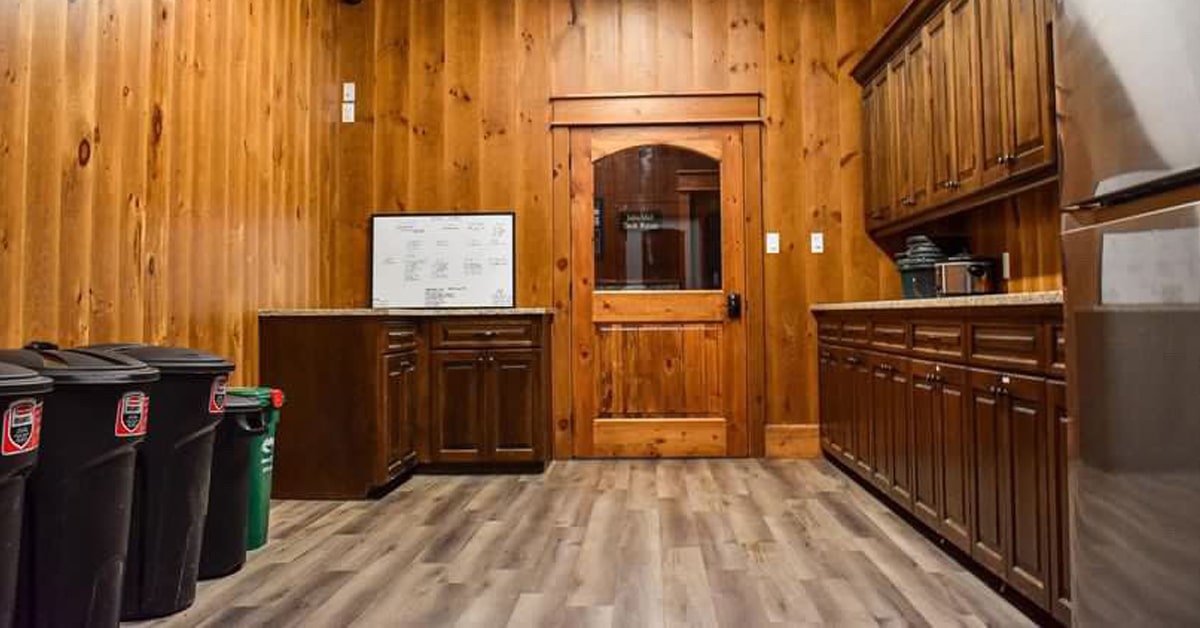Although it may not have the ‘wow’ factor of a spectacular arena, tack room or viewing lounge, the feed room is an essential component of any stable. It should be as thoughtfully planned as any other aspect of a barn.
We asked the owners of two large stables for their tips for planning and organizing their feed rooms. You’ll find these useful whether you operate a big equestrian facility or a small private barn for a few horses at home.
Claire Hunter is founder and owner of Braecrest Farm, a sport horse breeding and training operation in Oro-Medonte, Ontario, producing elite hunter and jumper prospects. Melanie Michaels Ryan, with husband John Ryan, owns JohnMel Stables in Puslinch, Ontario, a five-star facility where they breed racehorses and riding horses and offer classical dressage, riding lessons, horsemanship training and equine-assisted therapy and learning.
Here are their top 10 feed room hints and hacks:
1. Location
Hunter says this should be your first consideration. The feed room should be easily accessible, but not so close it disrupts the peaceful environment of the barn. JohnMel’s feed room has two doors: one opening into the barn and a second door on the outside wall so feed shipments can be delivered directly to the feed room from outside.

Buckets are numbered to avoid being used by multiple horses in New Vocations’ feed room – also a
sound biosecurity practice to prevent the accidental spread of disease.
2. Ventilation and insulation
Ventilation is necessary to maintaining quality of feed, as fresh air prevents mold growth and spoilage. Hunter suggests installing windows that can be opened and closed as needed, or installing a ventilation system. She says insulating the feed room to regulate temperature and humidity is a good idea, as extreme conditions adversely affect feed quality.
3. Storage containers
Invest in containers that will repel pests and moisture. Hunter likes metal bins or tightly sealed plastic containers as they keep insects and rodents from getting into feed. She labels containers to identify the type of feed and its expiration date.
Michaels Ryan “debated doing something fancy” for feed storage at JohnMel but ultimately chose to buy sturdy rubberized garbage bins from Canadian Tire that are lined up against one wall. They are easy to fill and simple to clean. She also says a fridge is a useful addition to store medications, etc., that need to be kept cool.
4. Shelving and organization
Hunter stresses this is key to keeping your feed room tidy and efficient. She likes shelves that are easy to clean and maintain, and she puts supplements and medications in clear storage bins or labelled containers on the shelves – that makes it easy to quickly find what you need. Michaels Ryan has beautiful custom-built wood cabinets along one feed room wall and a long countertop to make feed preparation easy.
Hunter has whiteboards in her feed room to keep track of horses and their individual diets, but Michaels Ryan is planning to install a digital monitor where information can be input from a keyboard or cell phone.

Small clear labeled bins for supplements and medications make it easy to identify them quickly, and also see what needs replacing.
5. Lighting
Barn owners need to be able to inspect the feed for quality and accuracy, read medication directions, etc., and bright, energy-efficient lighting will make this easier, especially at early morning and evening feeding times.
6. Practical layout
Keep accessibility in mind when designing your feed room, says Hunter. You want to have enough room to move around comfortably and shelves and storage units at a height that’s easy to reach. Hunter says you can never have enough storage and always build larger than you think you’ll need. Michaels Ryan agrees – despite her 12’ x 24’ feed room, “if I had my druthers, I’d go bigger in terms of size. You can never have enough.”
7. Pest control
Hunter advises sealing any gaps or cracks in walls and floors to prevent pest infiltration and regularly inspecting and cleaning the feed room to remove any potential attractants. Michaels Ryan says cats alone aren’t sufficient rodent control as they can’t keep a large barn completely pest-free. She has a pest control expert come in twice a year to install mouse and rat bait stations.

A utility sink is a must; floor drains are also recommended.
8. Cleaning
Both stable owners agree that a sink is indispensable in a feed room. Opt for a utility sink large enough to accommodate cleaning buckets, and incorporate counter space. Michaels Ryan suggests adding a screen over the sink drain to collect debris and prevent clogging, such as from preparing beet pulp. Hunter says a floor drain is a great addition as it makes it easy to pressure-wash floors or to clean up accidental spills.
9. Fire safety
Smoke detectors and fire extinguishers should be installed in the feed room and be sure to have clear exit paths in case of emergency.
10. Feed delivery
Michaels Ryan appreciated her Uline plastic trolley that holds pails with each horse’s feed so her workers don’t have to make multiple trips back and forth.

